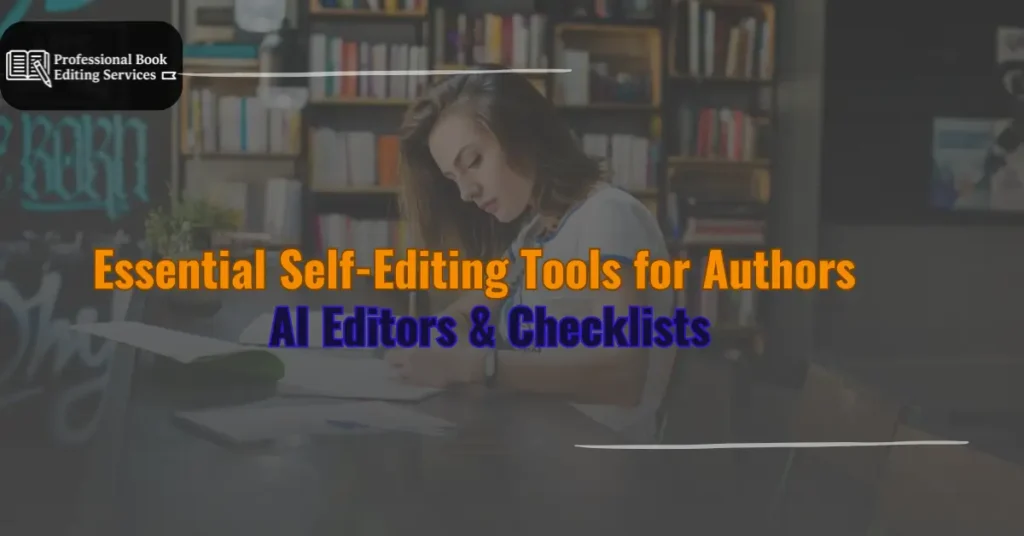Every poem begins as a feeling. A moment, a thought, or a rhythm sparks a line, and before long, the page is full. But poetry isn’t just about inspiration. It’s about precision. That’s why poetry editing plays a defining role in shaping how each word lands and how each stanza lives beyond the page.
Poets often work from instinct. They know when something feels right. But in revision, emotion must meet technique. The editor becomes the second set of eyes, someone who sees not just the intention behind the words, but also their actual effect on the reader.
Unlike editing fiction or nonfiction, poetry requires a lighter touch. Editors aim to preserve the poet’s unique voice while refining the language, cadence, and structure so the poem resonates more clearly. It’s about making the invisible visible, sharpening images, cleaning rhythm, and clarifying meaning without erasing the personal imprint behind the lines. Here’s why it’s crucial to have a poetry editor when you’re working on your prose to share with the world.
Respecting the Poet’s Voice
The foundation of any good poem is its voice. Whether it’s quiet and reflective or bold and raw, the voice gives the poem its emotional center. Editors are careful not to overwrite this. Their job isn’t to rewrite, but to guide.
In poetry editing, the first step is understanding what the poet is trying to say and how they’re saying it. From there, the editor evaluates whether the tone remains consistent, whether the emotional core comes through clearly, and whether the voice strengthens or weakens from start to finish.
Even small changes in word choice or punctuation can shift tone. Editors move slowly, suggesting where clarity can improve without silencing the writer’s intent.
This delicate process has echoes in memoir editing, where personal expression must be preserved while refining structure and clarity. The goal is similar: keep the voice, but lift the work.
Enhancing Imagery and Figurative Language
Poetry lives in images. Editors read for lines that evoke clear, surprising, or vivid pictures, and they flag those that fall flat or feel forced.
Does the metaphor carry weight? Does the simile clarify or confuse? Is a particular image repeated without adding depth? These are the questions a poetry editor asks.
They also ensure the figurative language aligns with the theme and emotional arc. A disconnected image, no matter how beautiful, can distract. Editors help strengthen the visual thread that runs through a poem, giving readers something to hold onto.
Writers coming from fantasy book editing or YA fantasy editing may already have a good grasp on rich description. In poetry, though, restraint is just as important. Editors help pare back overwriting to let strong images shine.
Refining Line Breaks and White Space
Line breaks are one of poetry’s most powerful tools. They shape pacing, create emphasis, and contribute to meaning. Editors examine every break to see if it serves a purpose.
Should a line end on a stronger word? Would enjambment add movement, or does it create confusion? Would breaking a stanza bring clarity, or interrupt the flow?
These decisions are nuanced. In poetry editing, editors consider how the poem sounds when read aloud, how it looks on the page, and how breaks affect emotional delivery.
White space matters too. It creates silence, focus, and rhythm. Editors help ensure that stanzas, spacing, and alignment feel intentional, not accidental.
While such layout work is less central in thriller editing or nonfiction editing, it’s critical in poetry, where form and content are inseparable.
Sharpening Rhythm and Meter
Even free verse has rhythm. Editors listen to how the poem moves. They look for lines that stumble or drag, and they suggest where tightening or rewording could help the poem flow more naturally.
In formal poetry, editors check for consistency in meter and structure. Is the syllable count even? Are there accidental shifts in pattern? Is the rhyme helpful or distracting?
Rhythm editing is similar in some ways to children’s book editing, where cadence can support engagement. But in poetry, rhythm also shapes emotional impact. A sudden break in the pattern can create tension or disrupt it.
Editors bring a trained ear to each line, helping poets make conscious choices about how the poem moves.
Clarifying Ambiguity Without Oversimplifying
Poetry thrives on suggestion. But too much ambiguity can lead to confusion. Editors identify where a poem becomes unclear, not because it’s deep, but because it’s disorganized.
They work with poets to clarify meaning without flattening complexity. That might mean strengthening transitions, removing contradictory lines, or reordering stanzas.
This kind of structure work is also common in short story editing and historical fiction editing, where flow and clarity matter just as much as style.
In poetry, though, the key is subtlety. Editors want to help it reveal itself more naturally rather than the poet explaining what he wrote.
Feedback from Beta Readers and Editors
Many poets begin with informal feedback from beta readers and editors. These early impressions can reveal how a poem resonates, or where it falls short.
But beta feedback is rarely enough on its own. A professional poetry book editor goes deeper. They understand pacing, structure, form, and line craft. They guide the poet in developing their work without compromising its voice or vision.
Some poets also rely on self-editing tools for writers, which can be helpful for flagging repetition or inconsistent grammar. But these tools aren’t built for poetry. They miss nuance, rhythm, and figurative meaning.
Editors bring the human judgment that poetry demands.
Working Across Styles and Forms
A good poetry editor is flexible. They understand different poetic styles, narrative, lyric, prose, experimental, and adjust their approach accordingly.
They also know how to handle hybrid work, where poetry blends with other genres. For example, a poet writing within a science fiction framework may draw from science fiction editing principles to maintain world consistency. A collection with a romantic focus might benefit from techniques used in romance novel editing.
Even poets experimenting with nonfictional elements may need insights from self-help book editing or non‑fiction editing, particularly if clarity is a goal.
Editors bring experience across genres to guide each piece in its own direction, not to make poetry fit a mold, but to help it succeed on its own terms.
Conclusion
Poetry editing is a collaborative art. It preserves the voice of the poet while elevating the language, rhythm, and imagery to their highest form. Through careful attention to line breaks, figurative language, and clarity, editors help poems connect more deeply with readers.
The process may be delicate, but the result is powerful: poems that move, challenge, and stay with the reader long after the last line.
And just like in YA book editing, children’s book editing, or memoir editing, editing in poetry is about refining what’s already there. It’s about shaping silence, sound, and sense into something unforgettable.





